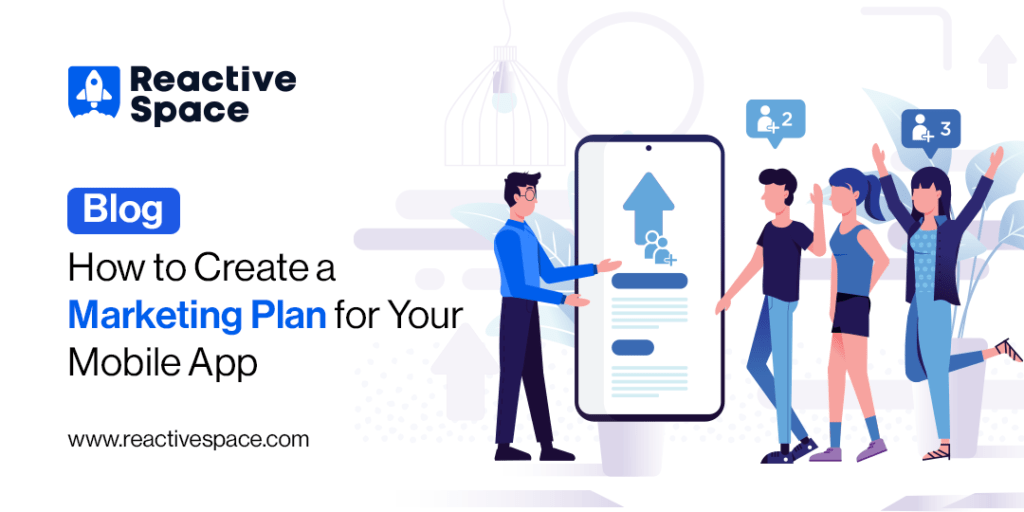
In the ever-evolving digital landscape, mobile apps have emerged as indispensable tools for businesses across industries, offering unparalleled opportunities to engage customers, streamline operations, and drive growth. However, developing a standout app is just part of the equation effectively marketing it is crucial to ensure its success. This guide will walk you through how to create a marketing plan for your mobile app, blending theoretical insights with actionable strategies to captivate a diverse audience.
In today’s competitive market, simply launching an app is not enough to guarantee success. To stand out amidst the millions of apps available, it’s essential to craft a comprehensive marketing plan that resonates with your target audience and drives user engagement. This involves understanding your app’s unique value proposition, identifying key marketing channels, and leveraging data-driven insights to optimize your approach. By implementing a well-thought-out marketing strategy, you can effectively position your app in front of the right audience, increase downloads, and ultimately achieve your business objectives.
What is a mobile marketing plan?
A mobile marketing plan outlines strategies and tactics to promote mobile apps effectively. It typically includes target audience identification, competitive analysis, goal setting, budget allocation, and specific action plans for app promotion, user acquisition, engagement, and retention.
What are the 4 P’s of marketing for an app?
Understanding the Essentials: The 4 P’s of Marketing for an App
At the heart of any successful app marketing strategy lie the 4 P’s: Product, Price, Place, and Promotion. For mobile apps, these elements take on unique dimensions:
- Product: Your app must offer tangible value, addressing a specific need or solving a problem for your target audience. It should boast a user-friendly design, intuitive navigation, and reliability.
- Price: While many apps are free, monetization strategies such as in-app purchases, subscription models, or ad support must be carefully considered and aligned with user expectations and industry standards.
- Place: Distribution channels for your app include app stores (Apple App Store, Google Play), your website, and other platforms relevant to your target market.
- Promotion: This involves the strategies and channels you use for advertising your app, including social media, email marketing, content marketing, and paid advertising.
In addition to the 4 P’s, it’s essential to focus on user acquisition and retention to ensure the long-term success of your app. User acquisition involves attracting new users to download and engage with your app, while retention focuses on keeping those users coming back for more.
This can be achieved through personalized messaging, targeted promotions, and ongoing engagement initiatives such as push notifications, email campaigns, and loyalty programs. By continuously monitoring user behavior and feedback, you can refine your marketing efforts and optimize your app for maximum user satisfaction and retention. Ultimately, a holistic approach that encompasses both acquisition and retention strategies is key to maximizing the ROI of your app marketing efforts and driving sustainable growth.
How can I write a marketing plan?
Crafting Your Mobile App Marketing Plan
Creating a marketing plan for your mobile app involves several strategic steps, each aimed at maximizing visibility and engagement among your target audience. Here’s how you can write a comprehensive marketing plan:
- Market Research and Analysis
Begin by thoroughly understanding your market, competition, and target audience. Identify gaps and opportunities, user pain points, and preferences to tailor your app’s features and marketing messages.
- Define Your Marketing Goals
Set clear, measurable goals for what you want to achieve with your mobile app marketing. Whether it’s user acquisition numbers, engagement rates, or revenue targets, having specific objectives will guide your strategies.
- Develop Your App Marketing Strategy
Incorporate the 4 P’s into your strategy, focusing on how best to present your app to your target audience. Consider the most effective channels and tactics for reaching them, whether through advertising applications, social media campaigns, influencer partnerships, or content marketing.
Crafting an effective marketing plan for your mobile app involves thorough market research, clear goal setting, and strategic decision-making. Define your target audience, set measurable objectives, and choose the most suitable channels to reach and engage your users. By aligning your tactics with your goals, you can create a focused and impactful marketing strategy that drives user acquisition, engagement, and ultimately, the success of your app.
What are the 3 main stages of mobile app marketing?
The 3 Main Stages of Mobile App Marketing
Successfully marketing your mobile app involves navigating through three critical stages of mobile app marketing:
- Pre-launch: This stage is all about building anticipation and buzz around your app. Focus on content marketing, social media engagement, teaser videos, and landing pages to capture interest and gather pre-registrations or sign-ups.
- Launch: Amplify your launch with press releases, email marketing, social media blasts, and paid advertising. Engage with early users to gather feedback and encourage positive reviews.
- Post-launch: Continue to engage your audience with updates, promotions, and new features. Utilize app analytics to refine your marketing strategies, improve user experience, and drive retention.
Navigating through mobile app marketing stages demands strategic agility. From pre-launch buzz to post-launch engagement, effective utilization of content, social media, and targeted advertising drives success.
Implementing the Best Marketing Approach
The best marketing approach for your app integrates a mix of organic and paid strategies tailored to your audience and objectives. Organic strategies include search engine optimization (SEO) for your app’s listing, social media marketing, and content creation. Paid strategies can encompass advertising apps through platforms like Google Ads and social media, as well as app store advertising.
Key Components of a Mobile Marketing Plan
A comprehensive mobile marketing plan outlines the strategies and activities you’ll undertake to promote your app across various channels. It should detail your budget, timelines, channels, tactics, and key performance indicators (KPIs) for each campaign. Regularly reviewing and adjusting your plan based on performance analytics is crucial for sustained success.
Final Thoughts
Creating a marketing plan for your mobile app requires a deep understanding of your market, a clear set of goals, and a strategic approach to reaching your target audience through the most effective channels. By focusing on the 4 P’s, navigating through the stages of mobile app marketing, and employing a mix of organic and paid strategies, you can significantly increase your app’s chances of success.
Remember, the mobile app development landscape is highly competitive and constantly changing. Staying agile, keeping abreast of market trends, and being willing to adapt your strategies are key to maintaining relevance and driving growth. With a well-crafted marketing plan, your app can not only reach but also exceed its potential, delivering value to users and achieving your business objectives.



